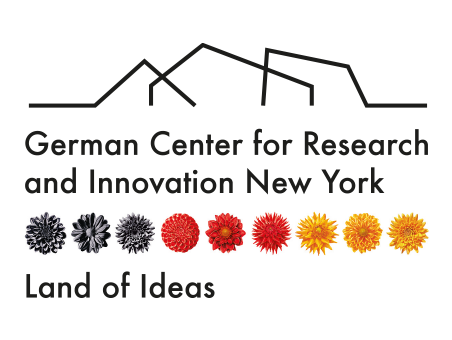What History Teaches Us About the Future of Work

Dr. Kerstin Jürgens is a professor of microsociology at the University of Kassel in central Germany. She was Chair of the working group “The Future of Work” at the Hans Böckler Foundation and was previously Chair of the section on “Work and Industry” at the German Sociological Society. Since the 1990s she has been researching changes in the working world.
In an interview with us she tackles all the buzzwords like automation, the gig economy and remote offices and tells us what history shows us about the future of work.
DWIH: Hi, Dr. Jürgens. Thanks for taking time to chat with us. Let’s jump right in. Can you describe to our readers your research and academic interests?
Jürgens: In my doctoral thesis more than twenty years ago, I investigated the how the working hours at the automobile manufacturer Volkswagen were becoming more flexible. This resulted in two directional decisions for me: on one hand, I was interested in the organization of work in general. On the other hand, however, it became clear that work and the workplace are always related to people’s lives and also to things they do outside the company. We see this, for example, in the socially significant area of private care work.
Today I am investigating work in the midst of technological change. Work is digitally connected, work processes are controlled and evaluated more systematically than before, and new options for cooperation between people and machines arise. This changes the way work is organized, but it also produces new ways of evaluating work.
Regulations with long histories and tradition such as an employment contract that guarantees holidays or occupational safety, for example, must be re-thought in the context of cloud- and crowdwork. If, in addition, technology now becomes central in the working world and living environment, it must be clarified which work a machine is actually allowed to do and which work it shouldn’t be doing. There are many legal and ethical but also socio-political questions. The question of how we want to work and how people will secure their existence in the future if many things can be done mechanically is yet to be clarified.
DWIH: Is there a historical example of a technological shift similar to the one we’re undergoing now? What lessons from history can we apply to today?
Jürgens: In Germany, the term “Revolution 4.0” is very popular. After the steam engine, assembly line production/mass production and the introduction of computers and robotics, we are now in the midst of a new upheaval with the interconnection of things.

Just as in the early days of industrialization, today it is not just a question of a new form of production, but the lives of people are changing fundamentally as a result of digitalization.Dr. Kerstin Jürgens
From my point of view, however, only this last step bears the traits of a real, new revolution. Because just as in the early days of industrialization, today it is not just a question of a new form of production, but the lives of people are changing fundamentally as a result of digitalization.
Proven economic success models have been thoroughly challenged because, for example, digital platforms have completely reshuffled the markets. We not only work and consume differently, but we also relate differently to other people and have to figure out what distinguishes people from machines in a special way.
Many jobs today can be carried out independently from one location, and concrete human-machine cooperation will continue to progress. But this also creates problems. Many people feel helpless or lonely without smartphones and digital connections. Research diagnoses a loss of empathy. Flexible connectivity and permanent accessibility also promote psychological wear and tear. Recent studies prove a connection to an increasing number of illnesses.
The industrial revolution, with its excessive use of labor power, ended in a human reproduction crisis: the high infant mortality rate and the foreseeable loss of human performance were so alarming that the political response was the introduction of rules and the invention of social policy. For the digital revolution, the answer has yet to be found.
DWIH: Research on the future of work is often limited by the discipline approaching it. People in tech focus on a technology-enabled future, HR professionals focus on workforce changes and educators focus on future skills. How is the big picture of the future of work different from these smaller, discipline-based pictures? If a transdisciplinary outlook is necessary, how do we get there?
Jürgens: The boundaries of disciplines are quickly reached when it comes to digital change. That’s why we have conducted a very intensive interdisciplinary exchange on the current challenges on various commissions and committees in Germany. In our Commission Report “Let’s Transform Work,” we have formulated concepts that can be used as concrete starting points in the world of work.
One-half of the committee consisted of experts from different scientific disciplines and the other half were experts from business, companies, trade unions and ministries. We took a close look at our current situation. The ageing of society and an expanded low-wage sector comprising almost 30% of all employees are major problems for social cohesion. Above all we aimed to respond to digitization.
We put forward ideas on how to safeguard new forms of work and regulate them collectively. Even though there were very controversial debates on some points, there was agreement in the end that a development strategy was needed and that the digital revolution needed a solid social embedding so that it would not jeopardize cohesion and so society as a whole would also benefit from the technological achievements. The learning process in such commission work is immense, even if it would certainly be easier for the individual sciences to remain on their own familiar territory. Interdisciplinarity and an offensive exchange of science, politics and practice are, therefore, the task of the present and must be institutionalized.
DWIH: Automation and augmentation are changing the way we work. Are there uniquely human abilities that technology will never be able to replace?
Jürgens: In the coming decades, we will experience machines being designed in such a way that they resemble people more and more. By imitating and simulating human characteristics, we try to make the machines more suitable for everyday use and motivate customers to buy them. They should animate us, understand us better than human friends and make life easier in many ways.
People can ascribe human abilities to machines, i.e. certify that they are “like a human being.” For many, the question of the difference between humans and machines becomes irrelevant at some point. For them it will then be more about the question of which new capabilities the machines have in their updated versions and how data protection works. This will be comparable to smartphones today. The more widespread machine services become, the more exclusive the humane ones will be in the foreseeable future.
Here it must be clarified whether it is an advantage if a machine or a human is making a medically necessary diagnosis and who gets which access to the respective service. Up to now human attention still has high priority.

Human contact triggers other biological reactions in us than artificial ones do.Dr. Kerstin Jürgens
Human contact triggers other biological reactions in us than artificial ones do. This is still highly valued, especially in the areas of caring for children, people in need, the sick or the elderly.
However, this does not mean that such services will not be automated. Even today, artificial substitutes are encouraging people in old people’s homes to exercise. In other words, economic and human-social motives are in conflict here as well. The objectives of the development and use of technology must therefore be clarified.
DWIH: One definition of innovation focuses on the introduction of something new like an idea, invention or process. Another definition looks at what one has to give up to innovate, however, like old ideas, values of models. What is it that we as a society are holding on to that we must let go of in order to define, embrace and create the future we want?
Jürgens: For me, it is ultimately the question from where new ideas, change and innovations are coming from. When asked today whether they would rather be cared for by a human being or a robot at home, most people choose the human being. The human may be complicated, and there may be arguments, but they are human after all. That is – at least still – more familiar to us.
But if we think of the situation in nursing homes with very thin staffing levels and rather inhumane conditions, then a mechanical accompaniment or support would make a lot of sense. So the question is: does a society decide to hire more people for this work, to train them well, to pay them appropriately and to introduce and check solid standards of care? Or does it rely on machine solutions? Are we talking about human needs or markets for new technologies and customer loyalty?
Technological innovations are only social and societal innovations when such contradictions dissolve—in other words, when social dialogue leads to agreement on how work and the quality of life can be improved and when technology development can expand human capabilities rather than shut them down.
At present, it is clearly noticeable that users are trying to make themselves heard with their demands for more transparency and data protection – and also their refusal to feed business models with their data that leads to monopoly-like structures and contradicts the market principle. If, at the same time, the material security of livelihood becomes fragile for many people, a ticking time bomb quickly emerges. The political actors are, therefore, under pressure to find solutions and are being forced to make revisions to their desires paths to innovation.
